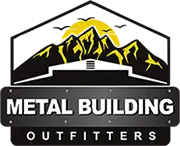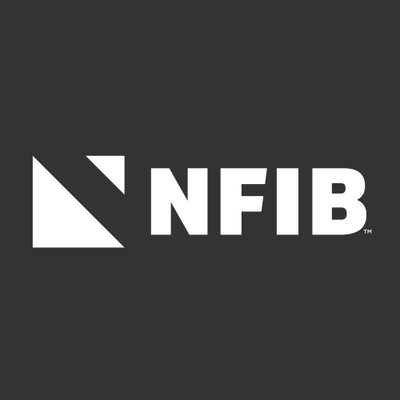
Contents
When considering eco-friendly practices for metal building construction, you might be surprised by the variety of environmentally friendly options available. There are numerous ways to reduce environmental impact, from using recycled steel to creative insulation materials and energy-efficient design strategies. But what about incorporating green roof installations or solar panel integration? These practices promote environmental friendliness and offer long-term benefits for your wallet and the planet. So, are you ready to explore how metal construction can embrace eco-conscious approaches that extend past the fundamentals?
Key Takeaways
- Opt for recycled steel to reduce environmental impact and energy consumption.
- Choose green insulation like recycled denim or wool for energy efficiency and indoor air quality.
- Utilize passive solar design and high-quality insulation for energy savings.
- Install green roofs to enhance biodiversity, urban agriculture, and building durability.
- Integrate solar panels for cost-effective energy with battery storage and net metering options.
Sustainable Materials Selection
Selecting long-lasting materials is crucial in metal building construction to minimize environmental impact and enhance long-term durability. When considering eco-friendly materials for your metal building project, recycled steel stands out as a top choice. Recycled steel reduces the demand for new raw materials and decreases energy consumption during production. By opting for recycled steel, you’re contributing to the conservation of natural resources and lowering greenhouse gas emissions.
In addition to using recycled steel, incorporating green insulation is another essential aspect of sustainable materials selection. Green insulation materials are made from recycled and natural fibers, providing excellent thermal performance while being environmentally conscious. These materials help regulate indoor temperatures, reduce energy consumption for heating and cooling, and improve the overall energy efficiency of your metal building.
When choosing green insulation, look for options such as recycled denim, cellulose, wool, or cork. These materials offer superior insulation properties and promote healthier indoor air quality by reducing the presence of volatile organic compounds (VOCs).
Energy-Efficient Design Strategies
Consider integrating inventive design strategies to boost energy efficiency in your metal building construction project. By incorporating passive solar techniques and selecting the right insulation options, you can significantly diminish energy consumption and create a more enduring building. Here are some progressive strategies to help you achieve energy efficiency:
| Energy-Efficient Design Strategies | Description | Benefits |
|---|---|---|
| Passive Solar Design | Aligning your building to maximize natural sunlight and heat, reducing the need for artificial lighting and heating. | Decreased energy bills, improved indoor comfort, and minimized environmental impact. |
| High-Quality Insulation | Selecting insulation materials with high R-values to prevent heat transfer through walls and roofs, maintaining a consistent indoor temperature. | Lower energy usage, enhanced thermal comfort, and increased building durability. |
| Thermal Mass Utilization | Integrating materials with high thermal mass like concrete or stone to absorb and store heat during the day, releasing it at night to regulate indoor temperatures. | Reduced temperature fluctuations, improved energy efficiency, and heightened occupant comfort. |
Green Roof Installation
Enhance the durability of your metal building project by incorporating a green roof installation, a creative technique that offers numerous environmental benefits and aesthetic appeal. Green roofs, also known as living roofs, involve covering the roof of a building with vegetation, creating a mini-ecosystem atop your structure.
One key advantage of green roof installation is the promotion of plant diversity. By planting a variety of vegetation on your roof, you can support different species of plants, creating habitats for insects, birds, and other wildlife. This benefits the local ecosystem and adds a touch of natural beauty to your building.
Moreover, green roofs provide an excellent opportunity for urban agriculture. You can grow fruits, vegetables, herbs, and even small crops on your roof, turning an unused space into a productive garden. Urban agriculture contributes to local food production but also helps in reducing the urban heat island effect by providing natural cooling through evapotranspiration.
Incorporating a green roof benefits the environment and offers a peaceful retreat in urban landscapes. Consider installing a green roof to transform your metal building into a durable and visually appealing structure that fosters plant life and urban agriculture.
Solar Panel Integration
Incorporating solar panels into your metal building design can lower energy costs and contribute to an eco-friendly energy solution. By harnessing the power of the sun, you can generate electricity for your building while minimizing your environmental impact.
To maximize the advantages of solar panel integration, consider including battery storage systems. These systems allow you to store excess energy generated during the day for use during periods of low sunlight or high demand, ensuring a consistent power supply and further reducing reliance on traditional energy sources.
Moreover, implementing net metering can improve the efficiency of your solar panel system. With net metering, any surplus electricity produced by your solar panels is fed back into the grid, offsetting the energy you consume when sunlight is inadequate. This decreases your electricity bills and fosters a more sustainable energy ecosystem by encouraging renewable sources.
When designing your metal building with solar panel integration, consult with experts in renewable energy to determine the best placement and capacity for your panels.
Water Conservation Techniques
Implementing water-saving strategies is crucial for eco-conscious metal building construction, ensuring efficient resource utilization and sustainability. To excel in water conservation, consider integrating rainwater harvesting systems. By collecting rainwater from the building’s roof into storage tanks, you can use this water for non-potable purposes such as irrigation, cleaning, and flushing toilets. This method reduces the demand for traditional water sources, making your metal building more environmentally friendly.
Another effective technique is the installation of low flow fixtures. These fixtures, including faucets, toilets, and showerheads, are designed to limit water flow without compromising performance. By using low flow fixtures, you can significantly decrease water consumption within your metal building while still maintaining functionality and user comfort. This simple adjustment contributes to both water conservation efforts and cost savings in the long term.
Incorporating rainwater harvesting and low-flow fixtures into your metal building construction not only promotes sustainability but also demonstrates a commitment to responsible resource management. These practices benefit the environment and create a more efficient and cost-effective building. By implementing these water conservation techniques, you can make a positive impact on both your construction project and the wider community.
Final Thoughts
Integrating eco-conscious methods in metal building construction can greatly diminish environmental impact.
By selecting environmentally friendly materials, implementing energy-efficient design strategies, and utilizing green technologies, metal buildings can become more eco-friendly and energy-efficient, contributing to a more environmentally conscious future.
Recent Posts
Top Eco-Friendly Tips for Metal Building Construction
Have you ever wondered how metal building construction can align with eco-friendly practices? By exploring
What Techniques Enhance Energy Efficiency in Metal Buildings?
To improve energy efficiency in metal buildings, you need to encompass a variety of methods.
Top Tips for Energy Efficient Custom Metal Structures
When aiming to maximize the energy efficiency of your custom metal structures, it’s crucial to


